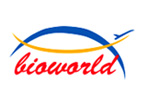Product Name :
CD267 Recombinant Protein Swiss-Prot :
O14836 Host :
E.coli Tag :
Amino acid Sequence :
MSGLGRSRRGGRSRVDQEERFPQGLWTGVAMRSCPEEQYWDPLLGTCMSCKTICNHQSQRTCAAFCRSLSCRKEQGKFYDHLLRDCISCASICGQHPKQCAYFCENKLRSPVNLPPELRRQRSGEVENNSDNSGRYQGLEHRGSEASPALPGLKLSADQVALVYS Restriction sites :
NdeI-XhoI Background :
Transmembrane activator and calcium-modulating cyclophilin ligand interactor (TACI), also known as tumor necrosis factor receptor superfamily member 13B (TNFRSF13B) and cluster of differentiation 267 (CD267), is a single-pass type III membrane receptor that is highly expressed on the surface of mature innate-like B cells, such as marginal zone and B-1 B cells in mice, and memory B cells in humans. TACI/TNFRSF13B/CD267 is also expressed on the surface of activated T cells, while monocytes and dendritic cells express lower levels of TACI/TNFRSF13B/CD267 primarily intracellularly. TACI/TNFRSF13B/CD267 is the receptor for soluble ligands BAFF/TNFSF13B and APRIL/TNFSF13. Upon ligation, TACI/TNFRSF13B/CD267 recruits tumor necrosis factor receptor–associated factor (TRAF) family members and calcium signal-modulating cyclophilin ligand (CAMLG) in order to activate NFAT, NF-κB, and AP-1 transcriptional programs. TACI/TNFRSF13B/CD267 is necessary for T cell-independent type II and type I responses, negative regulation of B cell and T follicular helper cell numbers, and promotion of class switch recombination in B cells. Mutations and aberrant regulation of TACI/TNFRSF13B/CD267 has been associated with cancer, autoimmune diseases, and immunodeficiency disorders. Multiple isoforms produced by alternative splicing have been identified. Soluble :
PBS, 4M Urea, PH7.4 Purification&Purity :
Transferred into competent cells and the supernatant was purified by NI column affinity chromatography and the purity is > 85% (by SDS-PAGE). Storage&Stability :
Store at 4°C short term. Aliquot and store at -20°C long term. Avoid freeze-thaw cycles. Expression vector :
pet-22b(+) BiowMW :
~22kDa Note :
For research use only, not for use in diagnostic procedure. concentration :
CD267 Recombinant Protein Swiss-Prot :
O14836 Host :
E.coli Tag :
Amino acid Sequence :
MSGLGRSRRGGRSRVDQEERFPQGLWTGVAMRSCPEEQYWDPLLGTCMSCKTICNHQSQRTCAAFCRSLSCRKEQGKFYDHLLRDCISCASICGQHPKQCAYFCENKLRSPVNLPPELRRQRSGEVENNSDNSGRYQGLEHRGSEASPALPGLKLSADQVALVYS Restriction sites :
NdeI-XhoI Background :
Transmembrane activator and calcium-modulating cyclophilin ligand interactor (TACI), also known as tumor necrosis factor receptor superfamily member 13B (TNFRSF13B) and cluster of differentiation 267 (CD267), is a single-pass type III membrane receptor that is highly expressed on the surface of mature innate-like B cells, such as marginal zone and B-1 B cells in mice, and memory B cells in humans. TACI/TNFRSF13B/CD267 is also expressed on the surface of activated T cells, while monocytes and dendritic cells express lower levels of TACI/TNFRSF13B/CD267 primarily intracellularly. TACI/TNFRSF13B/CD267 is the receptor for soluble ligands BAFF/TNFSF13B and APRIL/TNFSF13. Upon ligation, TACI/TNFRSF13B/CD267 recruits tumor necrosis factor receptor–associated factor (TRAF) family members and calcium signal-modulating cyclophilin ligand (CAMLG) in order to activate NFAT, NF-κB, and AP-1 transcriptional programs. TACI/TNFRSF13B/CD267 is necessary for T cell-independent type II and type I responses, negative regulation of B cell and T follicular helper cell numbers, and promotion of class switch recombination in B cells. Mutations and aberrant regulation of TACI/TNFRSF13B/CD267 has been associated with cancer, autoimmune diseases, and immunodeficiency disorders. Multiple isoforms produced by alternative splicing have been identified. Soluble :
PBS, 4M Urea, PH7.4 Purification&Purity :
Transferred into competent cells and the supernatant was purified by NI column affinity chromatography and the purity is > 85% (by SDS-PAGE). Storage&Stability :
Store at 4°C short term. Aliquot and store at -20°C long term. Avoid freeze-thaw cycles. Expression vector :
pet-22b(+) BiowMW :
~22kDa Note :
For research use only, not for use in diagnostic procedure. concentration :
Blocking peptide available as NCP0339P

 CD267 Recombinant Protein
CD267 Recombinant Protein 
 Datasheet
Datasheet COA
COA MSDS
MSDS SHIP
SHIP